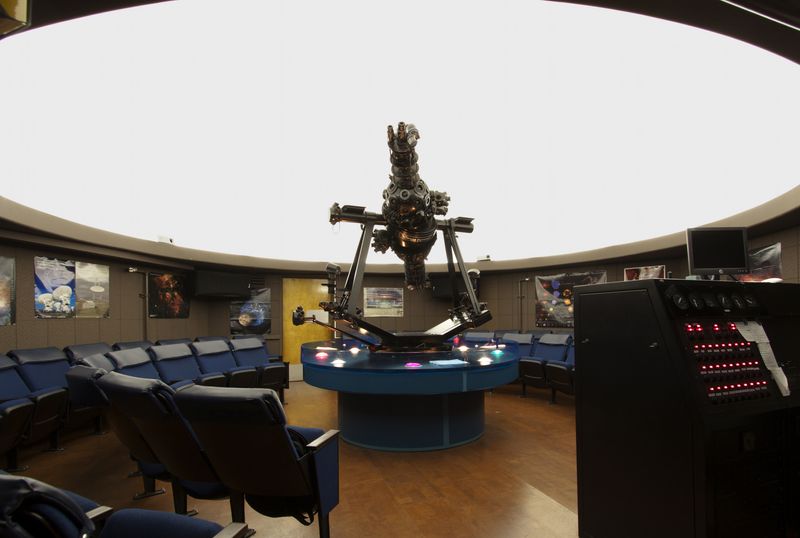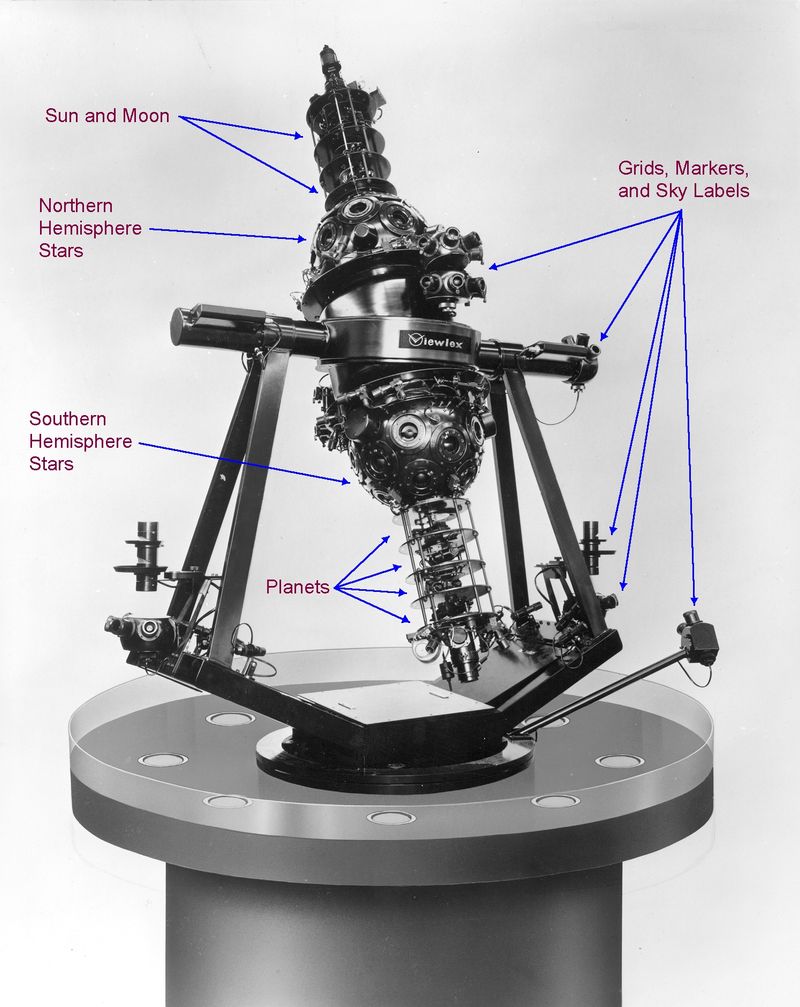UCLA Planetarium

UCLA Planetarium

UCLA Planetarium

The UCLA Planetarium finished construction in 1957 as part of the Mathematical Sciences Building, and is operated by the UCLA Department of Physics and Astronomy. Over its lifetime, the 24-foot diameter dome has housed three different star projectors (see below). With seating for 49 people, the UCLA Planetarium is a unique and intimate setting for visitors to learn about the universe. The facility offers shows to introductory astronomy classes, the Los Angeles community, and educational groups. Shows are presented primarily by UCLA Astronomy graduate students.

The star projector is at the heart of any planetarium - it is what recreates the night sky on the inside of the planetarium dome. Traditional star projectors, like UCLA’s, use several incandescent light bulbs ranging in brightness from 5 to 500 watts and pinhole screens to produce stars. They also have the usual ‘bug-like’ appearance, and must be located at the center of the planetarium.

UCLA’s original projector was a Spitz Model A, installed in 1957. In 1965, it was upgraded to a Goto Mercury projector, costing about $8,000 at the time. The current projector, a Viewlex Mark IIA (also known as the Goto GX–10), cost about $35,000 and was installed in 1973. State-of-the-art at the time, the Mark IIA has features such as:
In addition, the UCLA planetarium uses two InFocus IN2104EP digital projectors to add video, animation, image, and text content to its shows. These projectors can be used simultaneously, and each generates an image occupying nearly ⅓ of the dome. Audio from any source is routed through the dome’s four-speaker audio system.